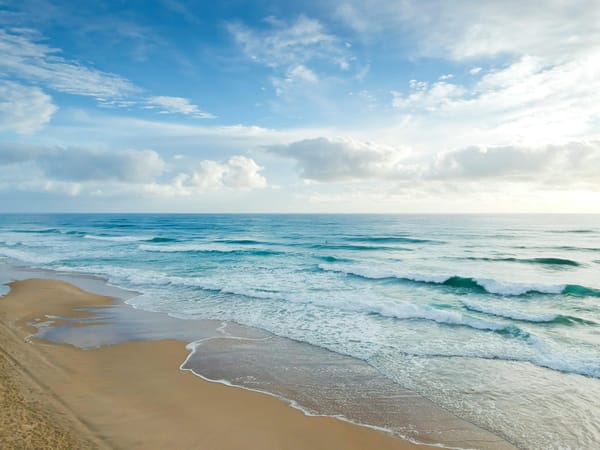Thursday☕️

Trending:
- Yesterday, April 9, 2025, President Donald Trump announced a 90-day suspension of reciprocal tariffs previously imposed on imports from various countries, lowering them to a uniform 10% rate. This followed an earlier policy where goods from around 60 countries faced tariffs ranging from 10% to 50%, intended to address trade imbalances. The pause was presented as a window for negotiations, spurred by diplomatic efforts from nations seeking to avoid further trade friction. Trump noted that the absence of retaliation from these countries contributed to the decision, aiming to foster discussions over the next three months.
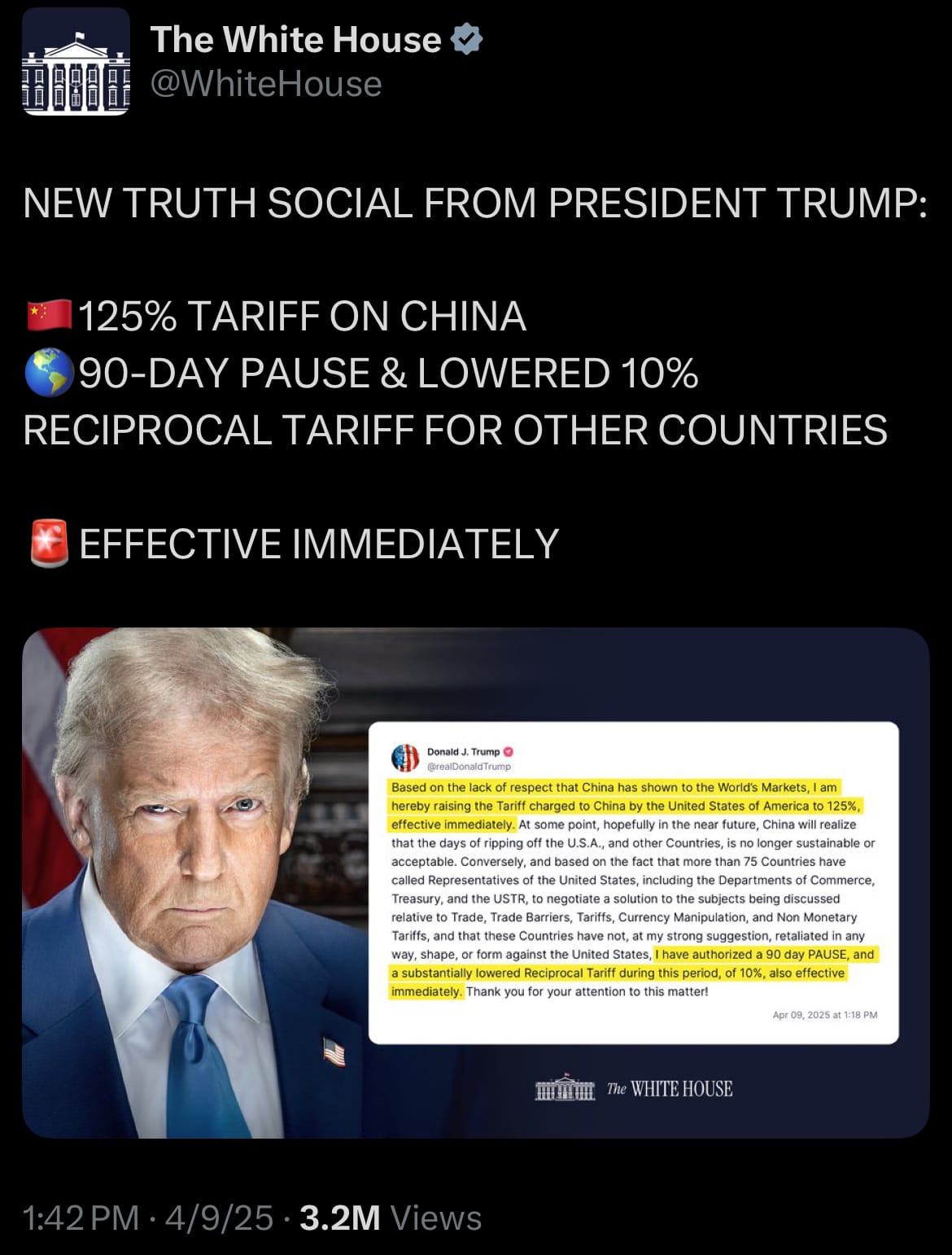
- At the same time, Trump introduced an immediate tariff increase on Chinese imports to 125%, effective April 9, 2025, setting China apart from the broader tariff relief. This escalation continues ongoing tensions in U.S.-China trade relations, with Trump pointing to China’s trade practices as justification for the targeted measure. The policy reflects a dual approach: a temporary de-escalation with most trading partners alongside an intensified stance toward China, reshaping the U.S. trade landscape as negotiations continue.
Economics & Markets:
- Yesterday’s U.S. stock market:
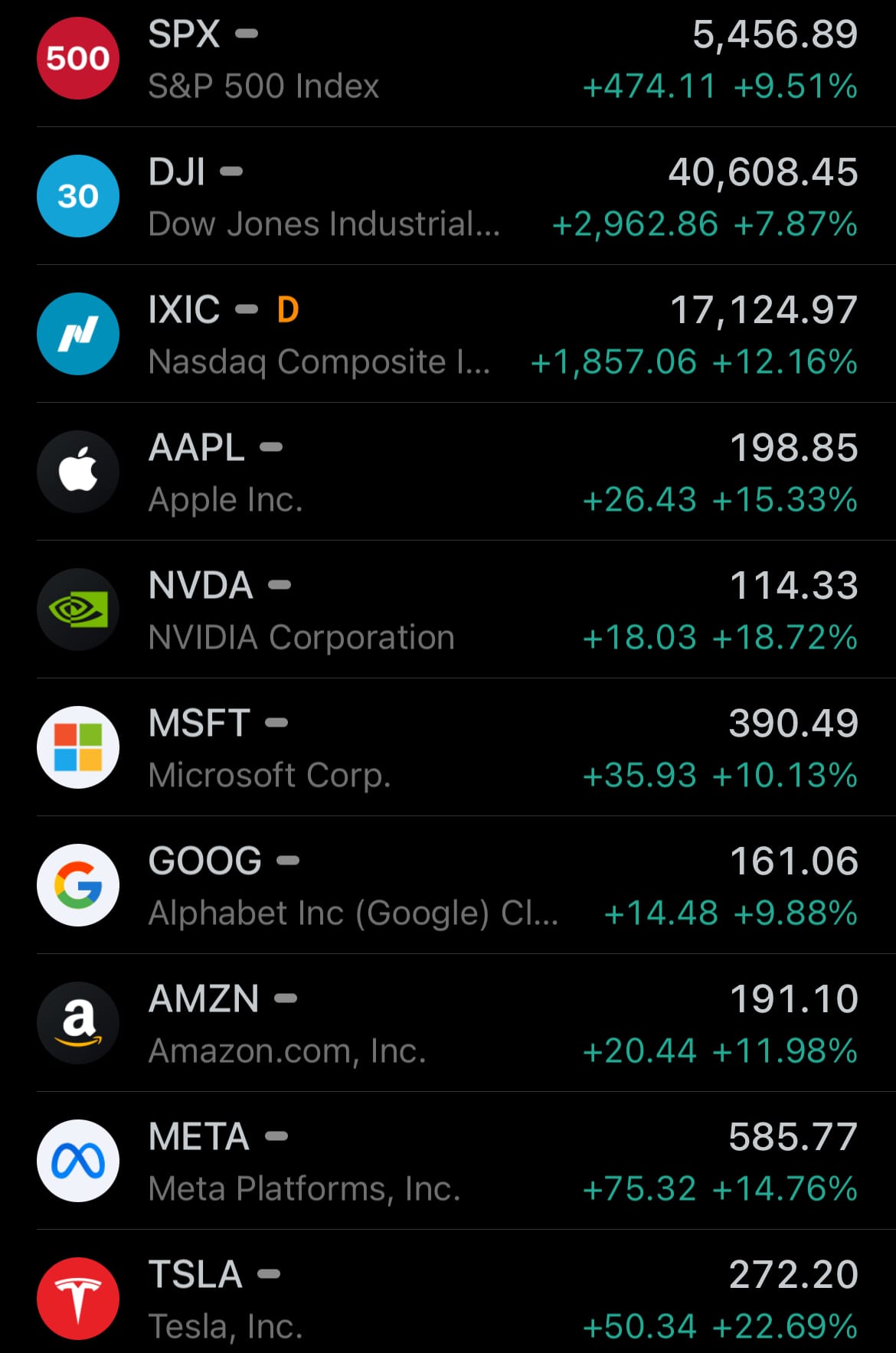
- Yesterday’s commodity market:
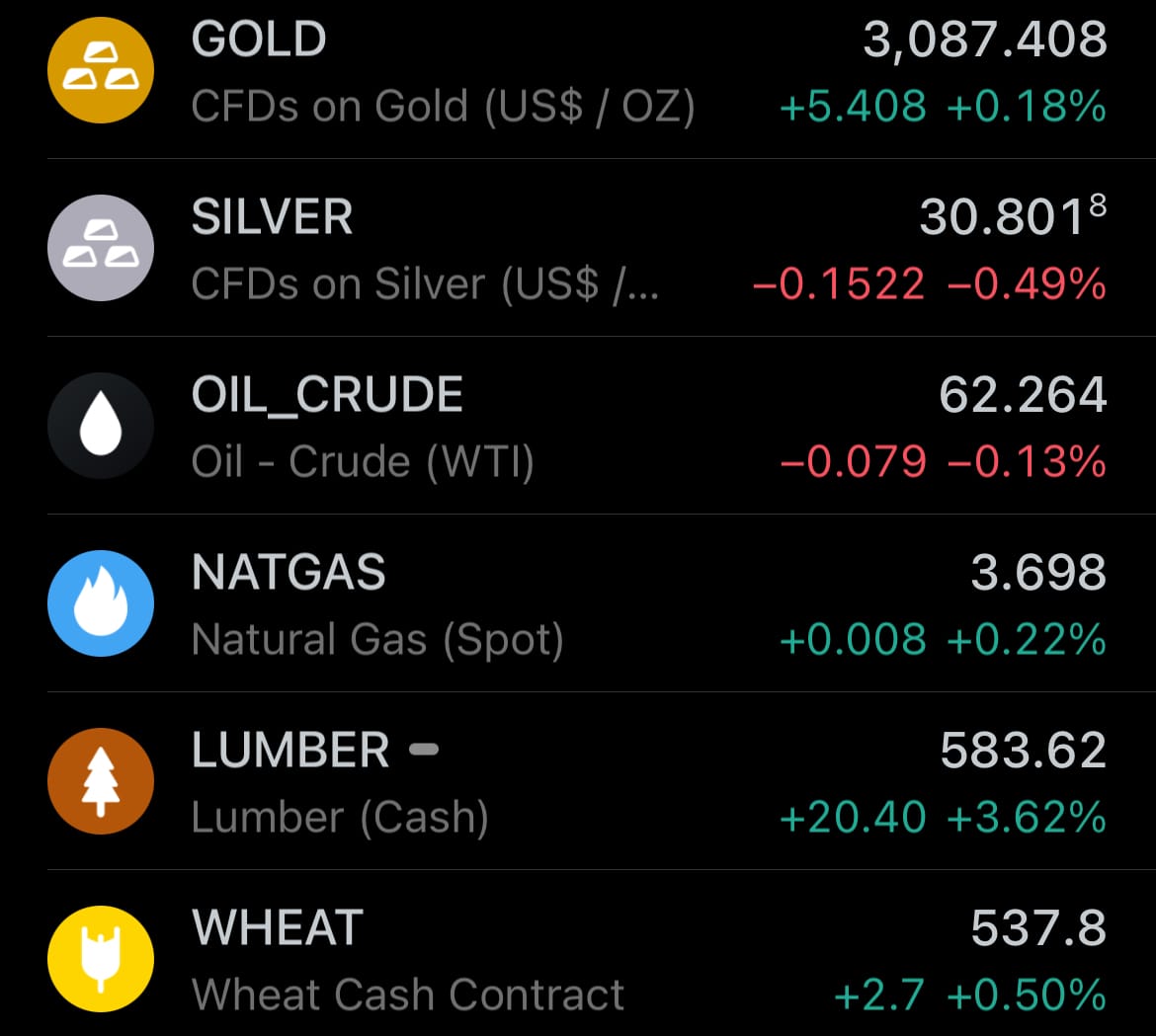
- Yesterday’s crypto market:
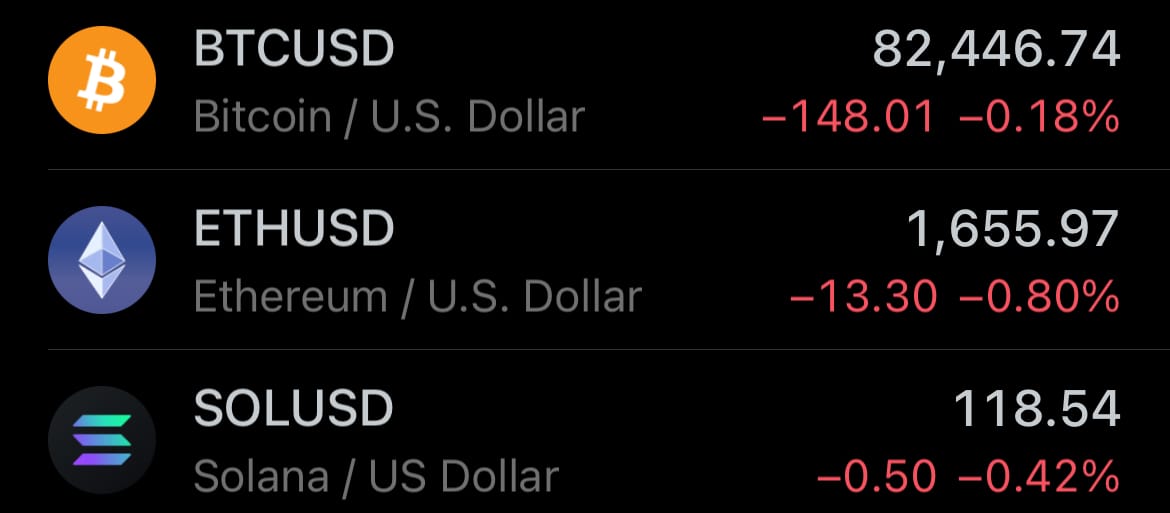
Geopolitics & Military Activity:


Environment & Weather:
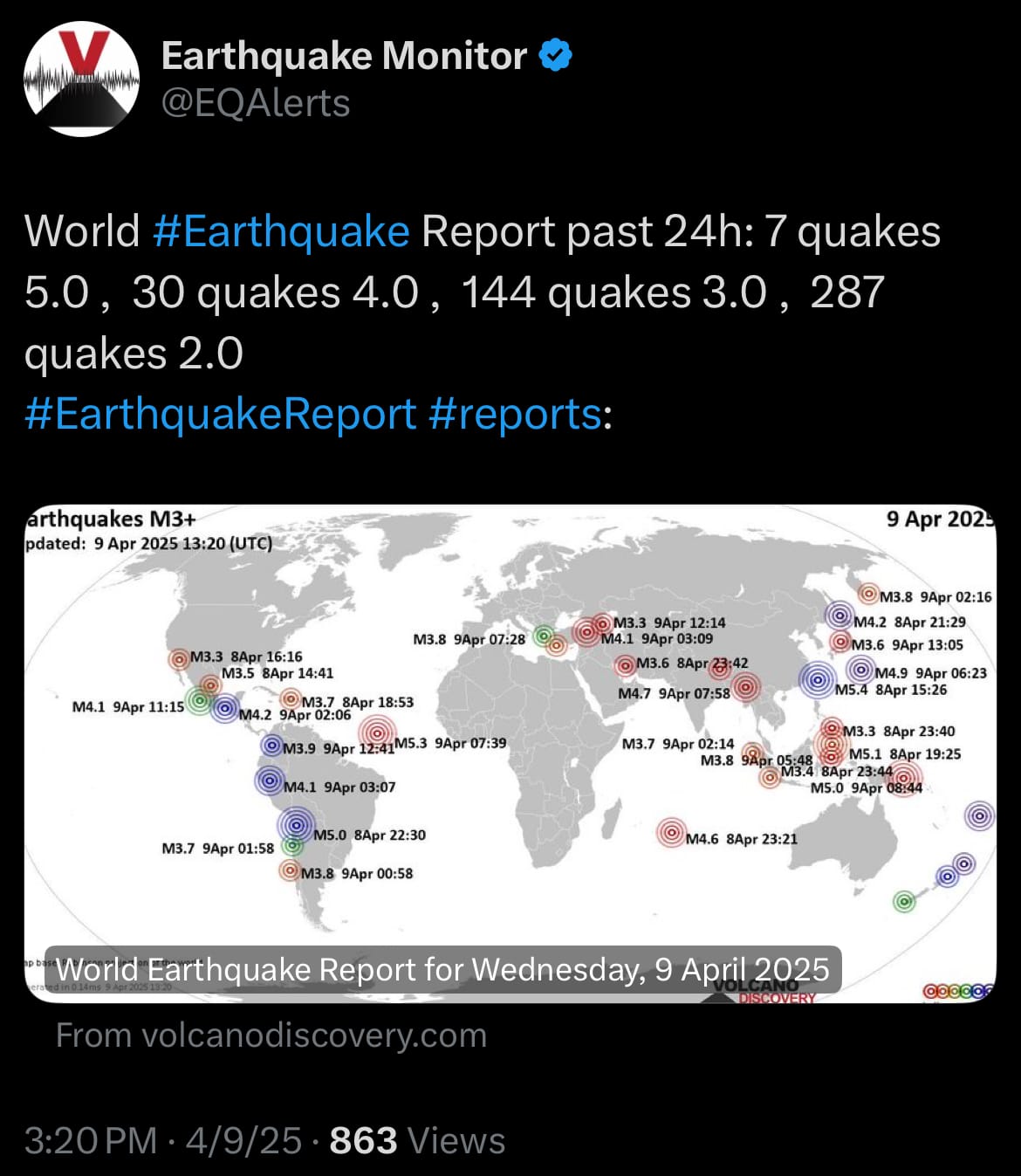
Law Enforcement:
- Yesterday, April 9, 2025, the U.S. Coast Guard reported a significant drug interdiction operation, offloading narcotics valued at $509.7 million at Port Everglades, Florida. The seizure included 44,628 pounds of cocaine and 3,886 pounds of marijuana, gathered from 11 separate operations in the eastern Pacific Ocean. These efforts involved the Coast Guard cutters James and Mohawk, targeting trafficking routes off the coasts of Peru, Ecuador, and the Galapagos Islands.
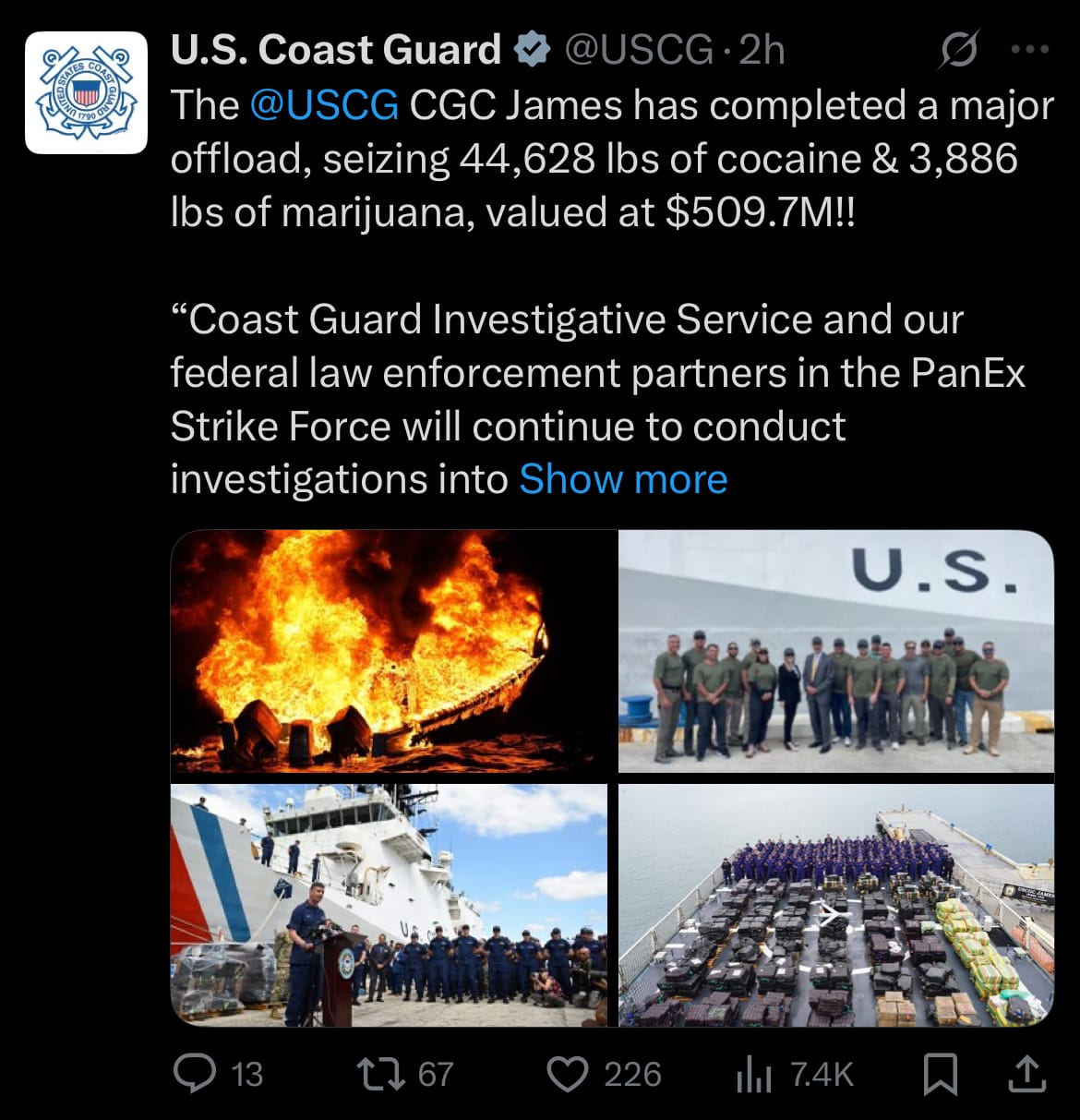
- These operations were conducted in coordination with federal law enforcement to address maritime drug smuggling. The Coast Guard employed ships, aircraft, and drones to carry out the interceptions, with the seized drugs subsequently transferred to federal authorities for further processing. The operation was described as part of broader efforts to disrupt illegal drug trafficking networks active in the region.
Privacy & Security:
- The U.S. Cybersecurity and Infrastructure Security Agency (CISA), in collaboration with the FBI and international partners, released an advisory about a cybersecurity threat from a group identified as "Salt Typhoon." This group is reportedly targeting organizations such as telecommunications providers, government agencies, and other critical sectors across multiple countries. The advisory notes that Salt Typhoon is accessing networks, extracting data like call logs and emails, and attempting to monitor key systems. The group exploits vulnerabilities in network devices—such as routers and VPNs—or uses stolen credentials to infiltrate and remain undetected for extended periods, sometimes months or years.
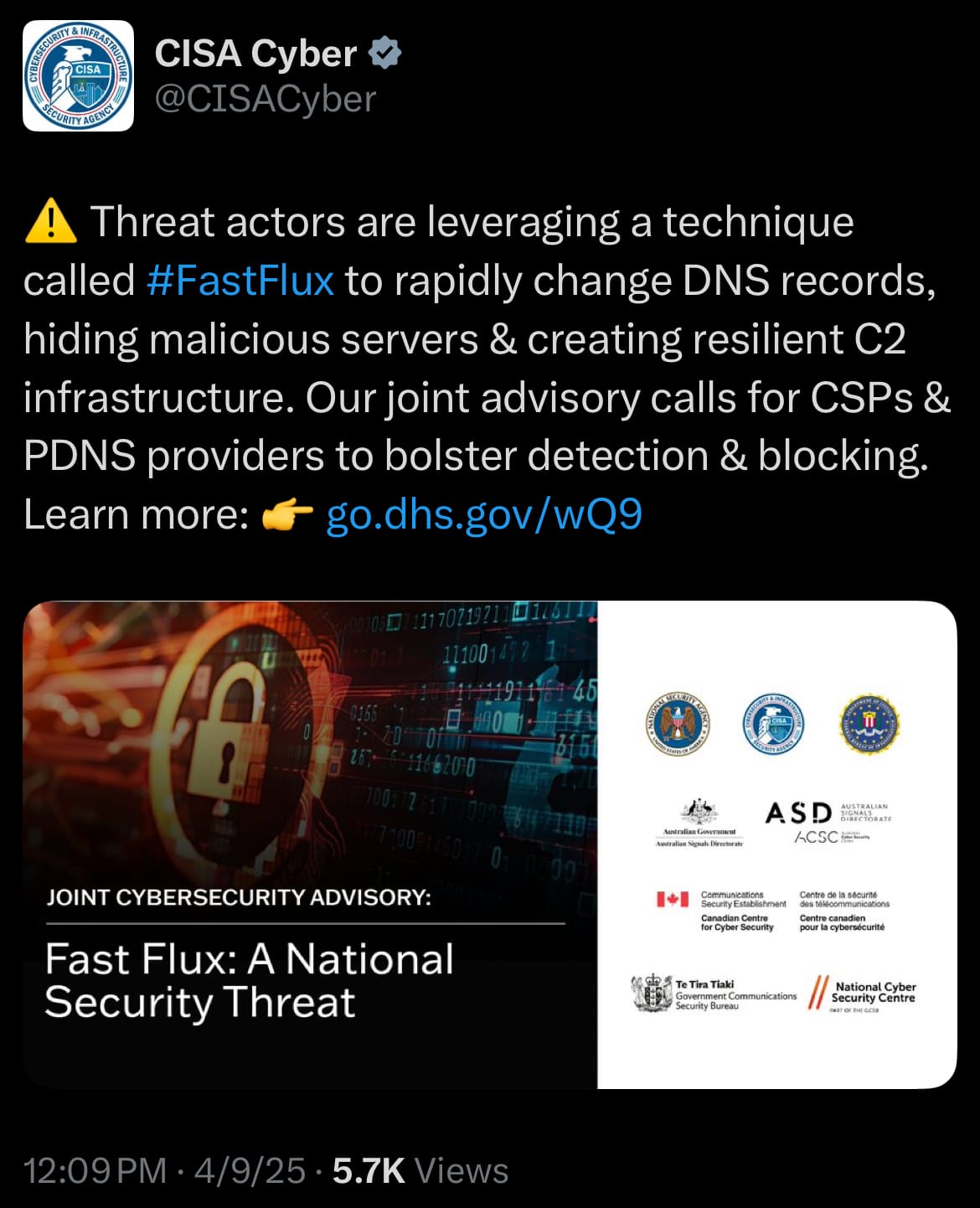
- For organizations and government contractors, CISA outlines specific mitigation strategies in the advisory to address this threat. It recommends applying patches and updates to network equipment, particularly customer premises equipment (CPE) like routers and VPNs, and replacing default configurations with secure settings, such as disabling unused ports and services. The advisory suggests implementing network monitoring with tools like NetFlow or endpoint detection and response (EDR) systems to detect anomalous traffic or unauthorized access attempts.
- It emphasizes encrypting all sensitive data using strong protocols (e.g., AES-256) and requiring multi-factor authentication (MFA) across all systems, especially for privileged accounts. Additionally, CISA advises conducting forensic analysis of logs and devices to identify prior compromises, isolating critical systems through network segmentation, and collaborating with telecom providers to monitor for signs of interception or abuse, such as unusual call metadata patterns. These detailed measures are designed to counter Salt Typhoon’s sophisticated tactics and strengthen organizational security.
Statistic:
- Largest assets on Earth by market capitalization:
- GOLD: $20.797T
- 🇺🇸 Apple: $2.987T
- 🇺🇸 Microsoft: $2.902T
- 🇺🇸 NVIDIA: $2.789T
- 🇺🇸 Amazon: $2.025T
- 🇺🇸 Alphabet (Google): $1.949T
- SILVER: $1.736T
- Bitcoin: $1.639T
- 🇸🇦 Saudi Aramco: $1.634T
- 🇺🇸 Meta Platforms: $1.484T
- 🇺🇸 Berkshire Hathaway: $1.124T
- 🇺🇸 Tesla: $875.53B
- 🇺🇸 Broadcom: $870.56B
- 🇹🇼 TSMC: $823.36B
- 🇺🇸 Walmart: $718.30B
- 🇺🇸 Eli Lilly: $676.82B
- 🇺🇸 JPMorgan Chase: $652.16B
- 🇺🇸 Visa: $641.26B
- 🇨🇳 Tencent: $535.63B
- 🇺🇸 UnitedHealth: $529.16B
- 🇺🇸 SPDR S&P 500 ETF Trust: $503.51B
- 🇺🇸 Mastercard: $469.92B
- 🇺🇸 Exxon Mobil: $457.61B
- 🇺🇸 Costco: $428.23B
- 🇺🇸 Netflix: $404.43B
History:
- The history of the drug trade spans millennia, beginning around 3400 BC when Sumerians in Mesopotamia cultivated opium poppies for their narcotic effects. By 1300 BC, Egyptians traded opium through merchant networks, while around 2700 BC, Chinese Emperor Shen Nung recorded cannabis use, distributed legally on a small scale. In the Middle East, Assyrian and Persian cultures adopted opium by the 6th century BC, moving it along the Silk Road. By 1200 AD, the Inca Empire in South America managed coca leaf production for local consumption, overseen by state systems. These efforts were organized and legal within their societies. In Europe, medieval apothecaries distributed opium-based remedies by the 14th century, often sourced from the Ottoman Empire, which controlled poppy regions. The British East India Company later transformed this trade, exporting opium to China in the 1830s, triggering the Opium Wars from 1839 to 1860 and marking a shift toward large-scale, state-backed drug commerce.
- The modern drug trade evolved as prohibition and conflict reshaped global markets. In 1820, morphine was isolated from opium, followed by cocaine’s extraction from coca in 1855, which appeared in Coca-Cola from 1886 until its removal in 1903 due to regulations. The U.S. Harrison Narcotics Act of 1914 criminalized drugs, spawning illegal markets. Mexican smuggling groups trafficking marijuana in the 1920s grew into the Guadalajara Cartel by the 1960s, while Colombia’s Medellín Cartel rose in the 1970s to dominate cocaine. In Afghanistan, Mujahideen groups taxed poppy farmers during the 1979 Soviet invasion, a practice the Taliban continued after 1994, briefly banning cultivation in 2000 before resuming post-2001 to fund insurgency with hundreds of millions annually. Other terrorist groups, like FARC in Colombia, profited from cocaine in the 1990s, blending drug trafficking with political aims. Today, as of April 2025, the Sinaloa Cartel leads the trade in fentanyl, methamphetamine, and cocaine, while the Taliban shifts toward methamphetamine after a 2022 poppy ban, reflecting a complex legacy of ancient merchants, colonial powers, cartels, and militant factions.
Image of the day:

Thanks for reading!
Earth is complicated, we make it simple.
Click image to view the Earth Intelligence System:
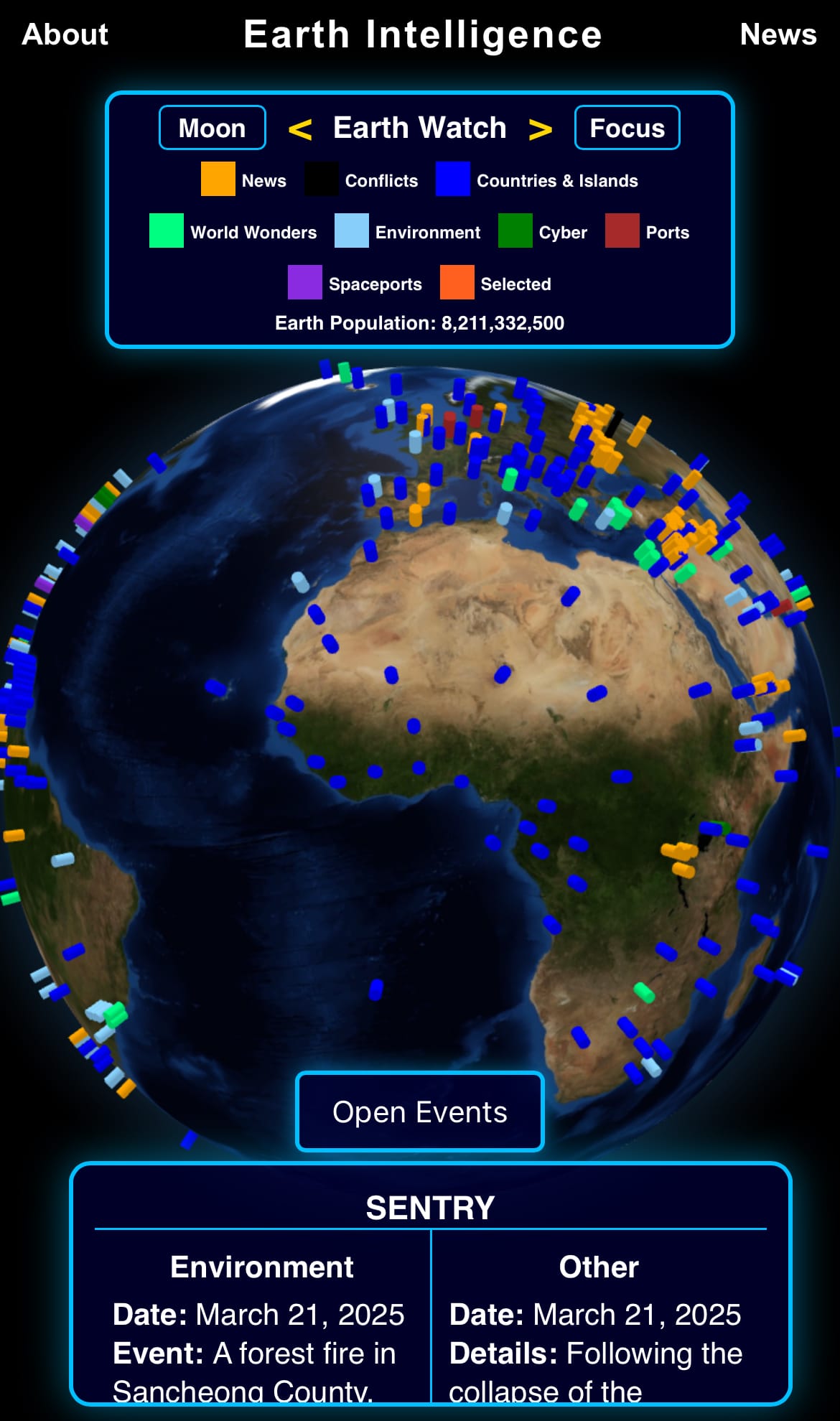


Support/Suggestions Email:
earthintelligence@earthintel.news


